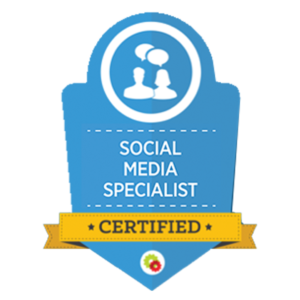MARKETING
Cultivating Well-Being Through Mental Health Marketing

May is Mental Health Awareness Month. This month, we’re reminded that mental health isn’t a dirty word but something we all have. Sadly, there’s still a lot of stigma around mental health and seeking treatment for mental health concerns. But with each generation, it becomes less of a taboo topic. And, with more awareness comes greater access to healing.
Many brands and marketers discuss mental health in May or as it becomes more culturally relevant, but why can’t embracing it and reducing stigma be a regular part of our daily marketing?
The Importance of Mental Health Marketing
An estimated 1 in 5 U.S. adults experience mental illness each year, whether they talk about it or not. That’s more than 50 million people, not including children and teens, who also experience mental health concerns. The sheer number of people impacted by mental health issues and the fact that we all have mental health makes mental health marketing important.
Talking openly about mental health can:
- Provide Resources. Signposting different mental health resources can let people know there are options. Whether for themselves or their loved ones, discussing the options helps make people aware that these resources exist and gives them the confidence to reach out.
- Reduce Stigma. Many people are too concerned about mental health stigma to be open to discussing it. Men, in particular, are often afraid of speaking about their mental health for fear of losing face. Having an ongoing, open conversation about mental health can reduce the stigma and encourage more people to understand that it’s not a taboo topic.
- Raise Awareness. Discussing mental health in a non-judgmental and matter-of-fact way can help normalize the conversation. As we become comfortable talking about mental health, more people can understand what they’re experiencing and access the necessary treatments to begin healing.
- Promote Well-Being. Prevention is the best cure. Mental health marketing can focus on more than treatment. It can encourage people to pay as much attention to their mental health as their physical health and take preventative steps to feel their best.
With so many people dealing with mental health issues, mental health marketing is crucial to help them get appropriate treatment and begin feeling better.

How to Approach Mental Health in Marketing
The importance of treading carefully with mental health marketing cannot be overstated. It’s a unique form of marketing that requires extra sensitivity.
When marketing mental health services:
- Be Empathetic. Mental health is a sensitive topic, and misinformation or insensitivity can harm people. Ensure your marketing material is accurate and empathetic and does not contribute to stigmatization or stereotyping.
- Be Authentic and Genuine. Don’t approach mental health marketing from a performative standpoint. If your company says it supports raising awareness for mental health, make sure that those values apply across the board. Additionally, mental health concerns can be challenging and complex. Acknowledging that you don’t know everything is better than pretending you do, which can seem disingenuous and lead people astray.
- Ask Questions. Rather than trying to seem as if you know all the answers, try creating a place for discussion. Look at the evidence and all the options available and let people make up their own minds as to what is best for them.
- Involve Professionals. You shouldn’t give medical advice unless you’re a medical or mental health professional. If you feel strongly about providing medical advice, enlist the help of a licensed professional. Including them can give your marketing material more authority and provide the most value to readers.
Marketing mental health ethically is a crucial skill. It provides transparency, builds trust, and empathizes with those seeking help.
Marketing Tactics for Mental Health
You can use many tactics to implement mental health in your marketing campaign. Your options really are limited only by what aligns with your brand and best fits your audience.

Join the mental health conversation with:
- Intentional SEO. Targeting specific keywords can help your website rank better with search engines. An intentional SEO can help increase visibility and make it easier for people to find your resources. About 4,400 people search for “mental health treatment” each year. If you offer mental health services, strong SEO content marketing will help them find you.
- Helpful Blog Content. Creating blog content that is informative, helpful, and relevant to mental health can help attract people to your website and establish your company as a credible source of information.
- Thoughtful Social Media Posts. Sharing thoughtful social media posts that promote mental health awareness and provide resources can help engage your followers and increase your reach.
- Educational Webinars. Hosting digital training sessions on mental health topics can help engage your audience and provide them with valuable information and resources.
- Supportive Lead Magnets. Creating e-books and downloadable worksheets or fact sheets allows people to read mental health-related information when convenient.
- Emails and Newsletters. Sending regular emails is a common way to ensure that your audience is aware of your latest updates and offerings. You can include mental health resources where appropriate in these emails and newsletters.
Exactly how to market mental health depends on your business’s focus. But consider how you can join the conversation through regular features and resources.
Best Practices for Discussing Mental Health
Joining the mental health conversation may mean creating a forum for discussions that make some people uncomfortable. As experts in mental health marketing we follow guiding principles and suggest these best practices to aim for when discussing mental health, which also apply to mental health marketing.

When discussing mental health in your marketing, consider:
- Use Person-First Language. People aren’t a diagnosis, and you should avoid labeling them as such. For example, instead of saying a “schizophrenic person,” say a “person with schizophrenia.” The former option reduces a person to their condition, whereas the second places the person firmly at the heart of the situation.
- Avoid Stigmatizing Language. Using neutral language can help promote empathy and understanding, whereas stigmatizing language can further marginalize people with mental health issues. For example, saying someone is an “addict” versus saying they “have an addiction.”
- Provide Resources and Support. While you want to raise awareness to normalize talking about mental health, you also want to help the people experiencing the issues you’re discussing. This informational support can include details about counseling services, support groups, and hotlines. These resources can help people access the care they need to manage their mental health effectively.
- Give Factual Information. By demonstrating how widespread mental health issues are, you can help to reduce stigma. But be sure the information you share is from a legitimate, up-to-date resource.
Following these tips can provide your audience with valuable content that positively impacts the conversation.
Missteps to Avoid
Not everyone will get it right the first time, and you shouldn’t let fear of getting it wrong stop you from starting or engaging in this critical conversation. Just try to remember and avoid these missteps when talking about mental health.

Are You Ready to Master Social Media?
Become a Certified Social Media Specialist and learn the newest strategies (by social platform) to draw organic traffic to your social media sites.
When discussing mental health, avoid:
- Exploitation. Come from a place of authenticity. Jumping on the bandwagon because you think discussing mental health can make you money or because it’s May is obvious to your customers.
- Stereotyping. Be mindful of the language you use when talking about people with mental health conditions. People who experience mental health conditions are diverse and complex. They deserve to be portrayed respectfully, like everyone else.
- Unqualified Advice. Don’t tell people what they should do. Instead, seek input from mental health professionals and provide your readers with options.
- Oversimplifying. Mental health is a complicated issue. To that end, suggesting things like “getting outside more” or “yoga” as a cure for mental health issues can be harmful. It can make people wonder why these things aren’t working for them.
The stakes are higher with mental health marketing because it involves people’s well-being. If the tone is accusatory or shaming, it can lead people further away from seeking help. If it’s too flippant, it can set up unrealistic healing expectations.
Conversations about mental health are critical. The more of us who participate, the better. Make sure you join the conversation in a way that’s authentic and on brand, and you’ll be able to make a positive impact.


















